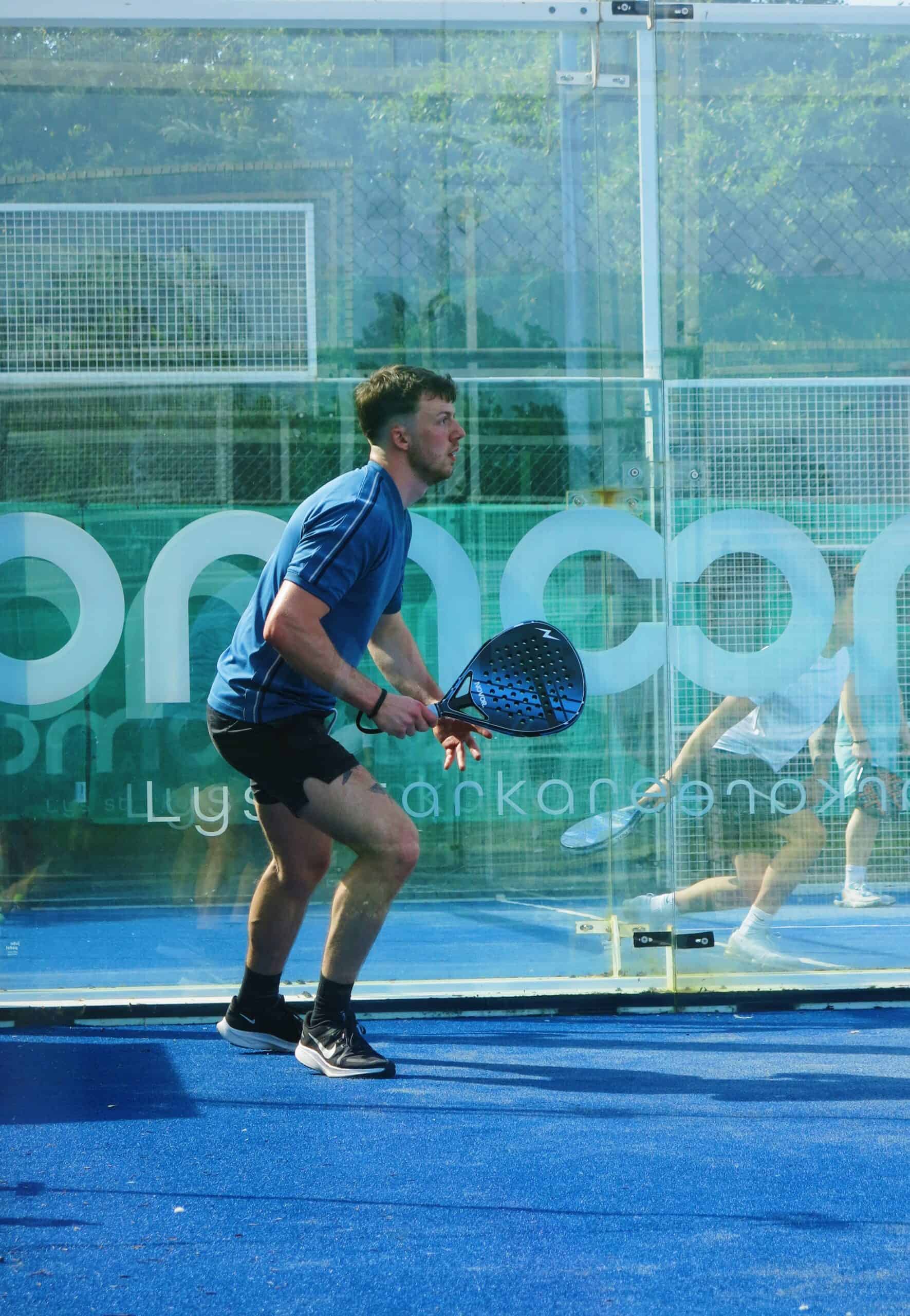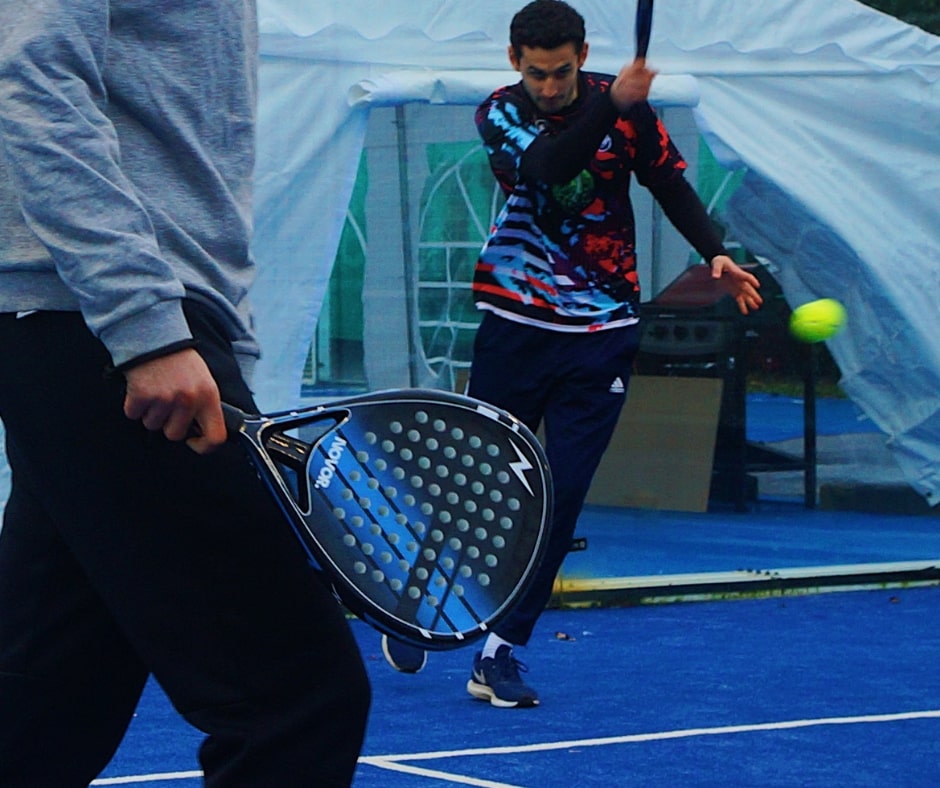
Many Padel players are known to have have integrated from other racket sports such as tennis and squash. In this blog, we will take a look at some of the transferrable skills between squash and padel and how they can benefit a player in their game. While each sport has its unique characteristics, players of squash possess a wide range of transferable skills that can easily translate into success on the padel court.
One of the most noticeable and obvious crossovers from squash to padel is the agility and footwork acquired on the squash court. Squash demands quick lateral movements, abrupt stops, and explosive accelerations – skills that directly link to effective manoeuvring in the confined space of the padel court. The ability to change direction smoothly and maintain balance is a distinct advantage in padel, creating opportunities for precise shots and strategic positioning.
Both squash and tennis emphasise precise racket control to deliver accurate shots. Squash, with its tight court dimensions, requires players to develop exceptional ball control. Tennis, on the other hand, encourages powerful yet controlled swings to place the ball strategically. These tailored racket skills seamlessly transfer to padel, where players must navigate a smaller court and use controlled strokes for successful plays.
The fast-paced nature of squash and the rapid exchanges in speed make a padel players reaction times heightened and with sharp reflexes. In padel, where split-second decisions can make the difference, the ability to anticipate your opponent’s moves and react swiftly becomes a valuable asset. Squash players, which are used to the relentless pace of the game, often find themselves well-equipped to handle the dynamic nature of padel rallies.

Squash and tennis players develop an a key sense of court awareness and strategic thinking. Understanding the court size, anticipating the opponent’s next move, and choosing the right moment to attack or defend are critical aspects shared among these racket sports. This strategic mindset seamlessly transitions to padel, where players must navigate the court’s unique features and capitalise on openings for successful plays.
Both squash and tennis demand a high level of cardiovascular fitness and endurance. The continuous movement, rapid sprints, and sustained rallies in these sports contribute to overall fitness. This endurance foundation proves beneficial in padel, where matches can extend with strategic points and prolonged rallies. Players from squash and tennis backgrounds often find themselves with the stamina needed to outlast opponents in intense padel encounters.
Squash players, with their experience in short drop shots on the wall, bring valuable skills to the padel court. The ability to execute effective volleys, read the opponent’s intentions, and control the hot play area is a distinct advantage. Squash players, accustomed to the close-quarters nature of the game, find their net play skills translating seamlessly to the dynamic exchanges at the padel net.
Tennis players, who often transition between different court surfaces, develop an adaptability that proves useful in padel. Padel courts can vary in surface materials, and players with a tennis background are adept at adjusting their game to suit different conditions. On the other hand squash surfaces are slightly different and provide more traction under the foot which will be a negative factor with regards to the skills able to be transferred.
Embracing the Fusion of Skills:
In conclusion, the transferable skills from squash and tennis create a dynamic fusion that enhances a player’s capabilities on the padel court. Whether it’s the agility gained from squash, the precision from tennis, or the strategic mindset fostered in both sports, the bridge between these racket sports is a testament to the universality of skills in the world of racquet-based games. Embrace the fusion of skills, and let the journey from squash to padel be a seamless evolution toward a more versatile and accomplished player.
Managing Director
We’re dedicated to upholding the highest standards of customer service and delivering on providing premium padel rackets. Please explore our extensive list of reviews to see what our customers have to say!
Super, top quality gear and a super helpful team. Have definitely secured my future business. 🤩
I had the chance to try the Novor padel racket last weekend and I was very surprised with the quality, weight and it’s balance distribution. Very good relation price quality and highly recommended. Very good effort and work developing their first official product by the guys of Novor!
What a stunning racket. Very good price, especially for a carbon racket, delivered in 2 days, comes with a nice bag. Beautifully designed and made, looks the business and feels very nicely weighted. Can't fault it. I just need to get better at the game to justify having such a nice piece of kit!

Elevate your padel game with Novor – Precision | Power | Performance. Unleash your potential with our padel rackets designed in London.
VirtualRock Ltd trading as Novor (™) 2023 . All Rights Reserved